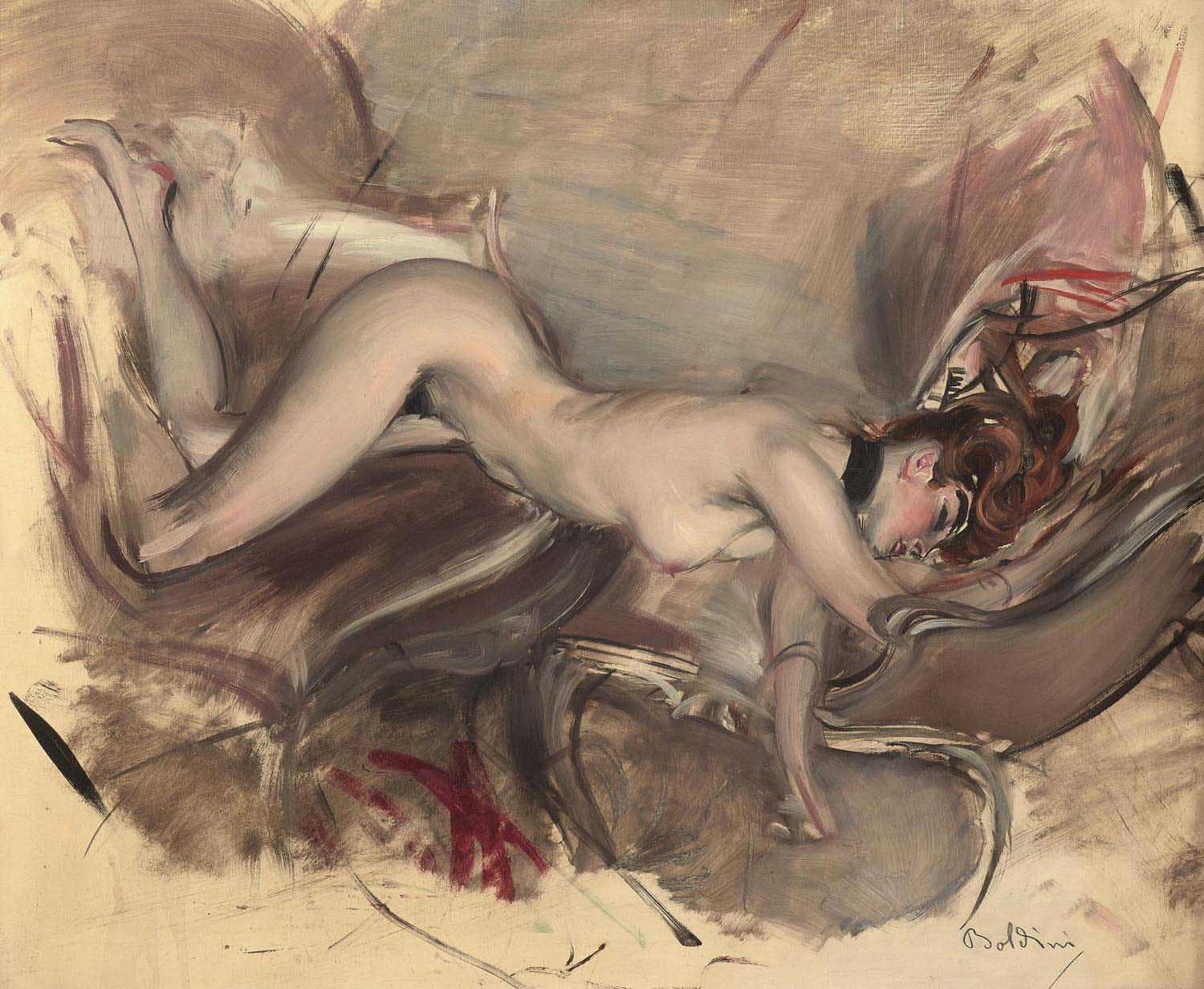-
Artworks

GIOVANNI BOLDINI Italian, FERRARA 1842-PARIS 1931
Nude Young Woman, c. 1890Oil on canvas60 x 74 cmSigned bottom right: Boldini
SOLD
Provenance
Private collection
Exhibitions
Boldini, lo spettacolo della modernità, Forlì, 2015.
Literature
Catalogo Bolaffi della pittura italiana dell’Ottocento, ed. G.L. Marini and P. Dini, Milan 1976, p. 35;
P. Dini, F. Dini, Boldini. Catalogo Ragionato, Turin 2002, III/I, pl. 435;
T. Panconi, Giovanni Boldini, l’opera completa, Florence 2002, p. 565;
Boldini, lo spettacolo della modernità, catalogue ed. F. Dini and F. Mazzocca, (Forlì, Museo San Domenico, 1 February – 14 June 2015), Milan, Silvana Ed., 2015, pag. 117. pl. 23.
Though born in Ferrara Giovanni Boldini spent most his life in Paris, where he took up residence in 1871. It was in the then capital of modern art that he was to discover a predilection for portraiture and, like several of his compatriots, to find the artistic fame and fortune he so longed for. Boldini succeeded perhaps better than any other society portraitist of his time in embodying the legend of the Belle Époque, his work implacably mirroring the high society of the day. He gained a reputation in the city as an acute observer and illustrator of the opulent and carefree elite that he sought to portray, also in a spirit of gently mocking censure. Boldini’s painting sank its roots in the Italian Macchiaioli movement, though he soon abandoned the style to discover the luminist vibration that was such a feature of French painting in those years in Paris and to take it to new heights. Towards the end of the century his style, long known for its dynamic draughtsmanship, became richer in chromatic nuance and formal experiment. He explored new techniques in the field of portraiture and the nude was to become one of his chief sources of technical and compositional experimentation from the 1880s.
Nude Young Woman testifies to the new style that Boldini developed in the course of his second phase in the Ville Lumière. His palette becomes more adventurous, taking on a swift, virtuouso quality, while his customary bourgeois sitters acquire fresh, dynamic movement (see Bolaffi, p. 34). Around this time the artist abandoned the neo-18th century feel that had characterised his early work. His compositions acquired such a new and powerful vitality and became imbued with such freedom of expression that dynamic, impetuous brushwork was soon to become the hallmark of his future compositions.
The artist breathes life into the astonishingly sprightly form of the Nude Young Woman by combining zealous draughtsmanship with masterfully modulated tonal contrast. This change in Boldini’s approach was spawned by his age-old interest in visually capturing the passage of time, the reality of daily life. The naked young woman stands out starkly against the background thanks to the propellent force of the paint applied with fluid, nervous, rapid brushstrokes soaked in light, all of which suffice the artist to allude to a real space whose emotional context, which can be identified precisely in a certain intimate eroticism, he also defines. Through these formal expedients Boldrini succeeds in drawing out the charming sensuality of the female body in all its physical substantiality. The young model is stretched out in abandon on an unmade bed, her hair is loose and her eyes are closed, yet the scene remains firmly elegant despite its undeniably strong erotic charge. The lithe and naked body is both the heart of the entire composition and the nerve centre from which the brushtrokes spread anxiously outwards towards the edges of the composition, surrounding the young woman in a vortex of sinuous lines that underscore its erotic sensuality.
